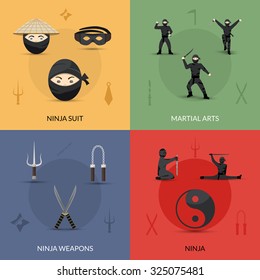The Background And Development Of Martial Arts: From Its Old Origins To The Techniques Practiced Today
The Background And Development Of Martial Arts: From Its Old Origins To The Techniques Practiced Today
Blog Article
Uploaded By-Bonner Clements
Enter the world of martial arts, where ancient origins and modern strategies clash in a thrilling journey of self-control and self-discovery.
As you delve into the history and development of this exciting art form, prepare to be mesmerized by the cultural impacts, technological innovations, and extensive ideology that have shaped it over centuries.
From the battlegrounds of old human beings to the training premises these days, martial arts have actually stood the test of time, frequently adapting and expanding.
Each strike, each motion, lugs with it the weight of numerous years of practice and wisdom, gave via generations. This is a story of durability, of warriors who looked for not just physical prowess, however also self-confidence and harmony.
Join us on this exceptional expedition as we reveal the secrets, the legends, and the transformational power of martial arts.
Prepare to be influenced, challenged, and for life changed by the history and development of martial arts.
Social Impacts on Martial Arts
As you check out the history and development of martial arts, you'll promptly uncover the fascinating methods which social impacts have formed these battle strategies.
From the ancient human beings of China and India to the a lot more current growths in Japan and Brazil, martial arts have been heavily influenced by the cultures in which they stemmed.
As an example, Chinese martial arts, such as Martial Art and Tai Chi, are deeply rooted in the ideology of Taoism and the idea of Yin and Yang.
In contrast, Japanese martial arts, like Karate and Judo, mirror the samurai warrior practices and the values of discipline and honor.
In a similar way, Brazilian fighting style, Capoeira, integrates elements of African dance and music, mirroring the social heritage of African slaves in Brazil.
These cultural affects not only provide each fighting style its one-of-a-kind features however also offer a deeper understanding of the historic and social contexts in which they evolved.
Technological Innovations and Martial Arts
With the increase of advanced weaponry and cutting-edge training tools, you've had the ability to enhance your skills and adapt to the ever-changing combat landscape.
Technological improvements have changed the way martial arts are exercised and educated. Virtual reality simulations currently permit you to learn practical combat situations without the risk of physical harm. High-speed cams capture every step, allowing you to evaluate and excellent your methods. Wearable tools monitor your heart rate, breathing, and muscle mass activation, offering instantaneous responses on your efficiency.
Furthermore, the development of customized equipment, such as resistance bands and dexterity ladders, has allowed you to boost your rate, strength, and dexterity. These technological developments have not just made training more reliable however have actually likewise pushed the limits of what is possible in martial arts, enabling you to get to brand-new elevations in your practice.
The Philosophy and Principles of Martial Arts
The ideology and principles of martial arts are deeply rooted in shaping your frame of mind and instilling discipline, emphasis, and regard in your practice.
1. cheap criminal defense attorney near me of mind: Martial Arts educates you to establish a strong and resilient mindset. https://attorneyatlawcriminaldefe21986.blazingblog.com/30325494/actions-to-identify-the-most-appropriate-criminal-law-firm-for-your-lawful-depiction allows you to overcome challenges both on and off the mat, pushing your limits and standing firm despite hardship.
2. Technique: Martial Arts demands self-control and self-discipline. check out the post right here and adherence to rigorous policies and strategies, you find out to manage your impulses and develop a solid work ethic.
3. Focus: Martial Arts calls for extreme emphasis and concentration. By training your mind to be existing in the minute, you boost your capability to react rapidly and efficiently during combat situations.
4. Respect: Martial Arts emphasizes respect for oneself, trainers, training partners, and challengers. It shows you to value the skills and experiences of others, cultivating a sense of sociability and gamesmanship.
Conclusion
Congratulations on finishing your trip with the fascinating world of martial arts! Throughout this exploration, you have experienced the rich history and exceptional advancement of these battle techniques.
From their old origins to the modern strategies we see today, martial arts have been formed by cultural influences.
The assimilation of technology has actually also played a substantial role in revolutionizing the way martial arts are taught and exercised in the here and now day.
However, it is necessary to keep in mind that martial arts are greater than simply physical combat. They encompass extensive viewpoints and guiding principles that go beyond the plain act of combating.
Take a minute to reflect on this anachronistic experience and value how the legacy of martial arts continues to prosper in today, going beyond time and borders.
